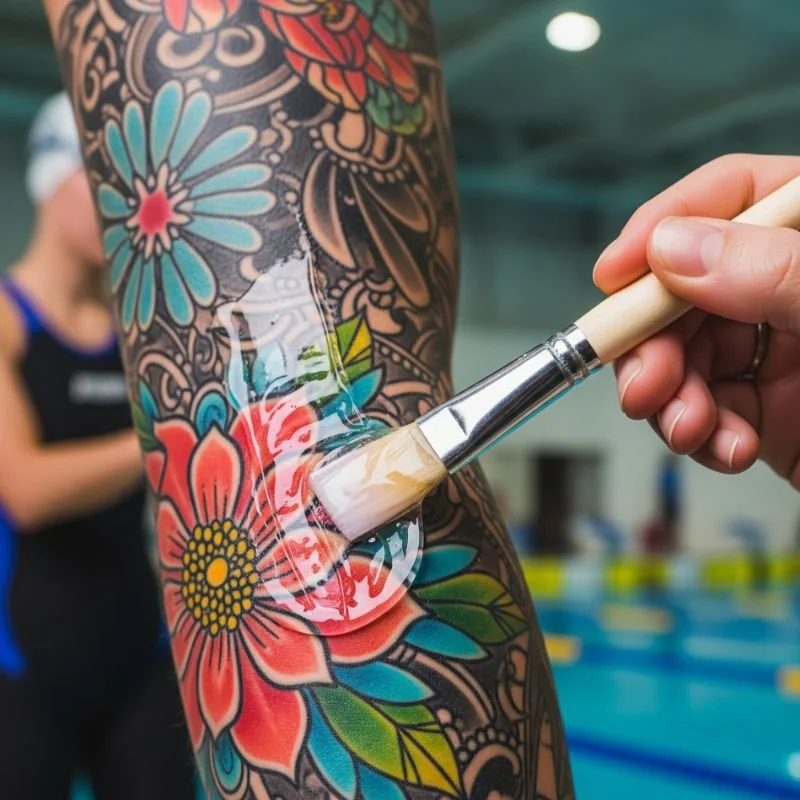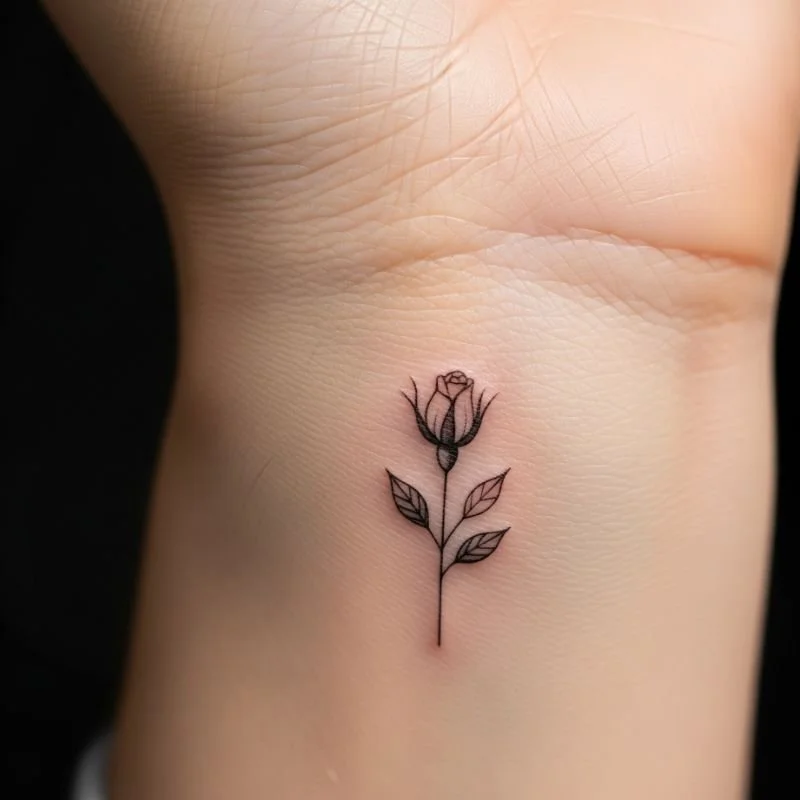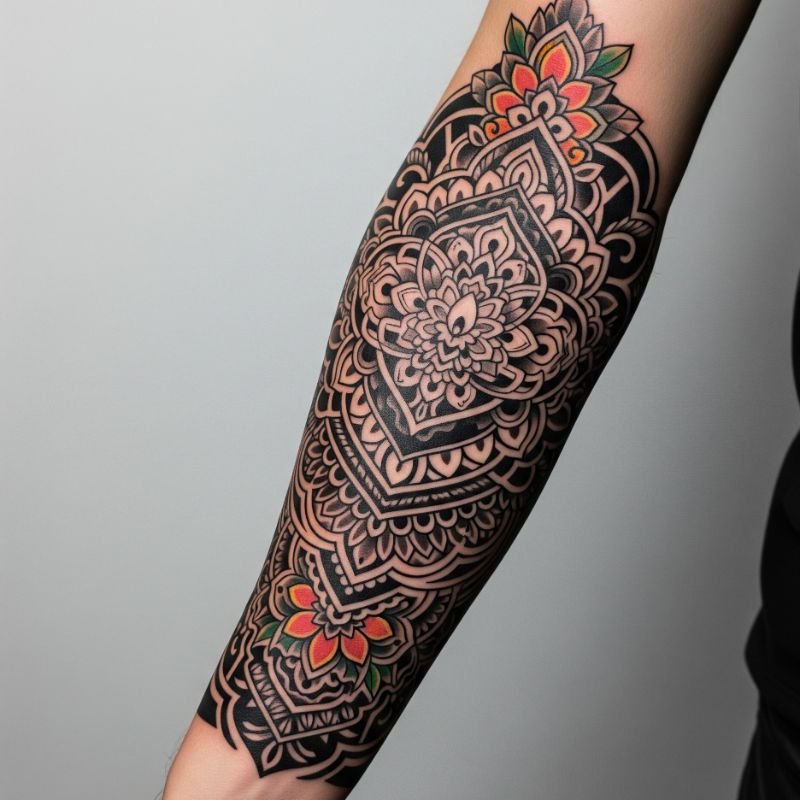How to Waterproof a Tattoo for Safe Swimming
Learn how to waterproof tattoos for swimming safely. Expert tips, products, and methods to protect your fresh ink from water damage.
Getting a fresh tattoo is exciting, but man, does it throw a wrench into your summer swimming plans! Whether you're dealing with a brand new piece of art or just want to protect an older tattoo, knowing how to waterproof a tattoo for safe swimming is absolutely crucial. You can't just slap on any old covering and call it a day. Your skin needs to breathe, heal properly, and stay protected from bacteria-laden water that could turn your beautiful artwork into a disaster. Swimming with an unprotected tattoo isn't just risky - it's downright dangerous. Pool chemicals, lake bacteria, and ocean salt can wreak havoc on healing skin, leading to infections, fading, and scarring that'll make you regret ever stepping foot near water. But don't worry! With the right knowledge and supplies, you can keep your ink safe while still enjoying those poolside vibes.
Understanding Why Tattoos Need Protection
The Healing Process Explained
Fresh tattoos are essentially open wounds, and boy, do they act like it! Your skin's been punctured thousands of times, and those tiny holes need time to close up properly. During the first few weeks, your tattoo goes through several healing stages that make it vulnerable to water damage. Initially, your tattoo will weep plasma and ink - that's totally normal but makes waterproofing tricky. The skin's natural barrier is compromised, making it a perfect entry point for bacteria and other nasties lurking in swimming pools, lakes, and oceans. Even after the initial healing period, your tattoo remains somewhat vulnerable for up to six weeks.
Water Dangers You Can't Ignore
Swimming pools might look clean, but they're chemical soup! Chlorine and other sanitizers can cause serious irritation to healing tattoos, leading to prolonged healing times and potential color loss. Public pools are especially risky because you never know what kind of bacteria might be floating around. Natural bodies of water present their own challenges. Lakes and rivers can harbor harmful bacteria like E. coli and Staphylococcus, while ocean water contains salt that can dry out healing skin and cause painful stinging. Even your backyard pool isn't 100% safe if the chemical balance is off.
Essential Waterproofing Products and Materials
Medical-Grade Waterproof Bandages
Here's where things get interesting - not all waterproof bandages are created equal! Medical-grade options like Tegaderm or Saniderm are specifically designed for wound care and offer superior protection. These transparent films allow your skin to breathe while creating an impermeable barrier against water. Regular bandages just won't cut it. They'll peel off in water faster than you can say "cannonball," leaving your tattoo exposed and vulnerable. Invest in quality products - your tattoo will thank you later!
Waterproof Tape and Sealants
Sometimes you need to get creative with your waterproofing strategy. Medical tape designed for swimming can help secure edges of larger protective coverings. Liquid bandage products create a flexible, waterproof seal that moves with your skin. However, be super careful with sealants! Some contain ingredients that can irritate healing tattoos. Always test a small area first and consult with your tattoo artist about which products they recommend.
Step-by-Step Guide: How to Waterproof a Tattoo for Safe Swimming
Preparation is Everything
Before you even think about waterproofing, make sure your tattoo is clean and completely dry. Gently wash the area with antibacterial soap and pat dry with a clean towel. Don't rub - patting is your friend during the healing process! Gather all your supplies beforehand because once you start applying waterproof coverings, you don't want to be scrambling around looking for tape or scissors. Having everything within arm's reach makes the process much smoother.
The Application Process
Start by cutting your waterproof bandage to size, leaving about an inch of overlap around your tattoo. This extra coverage ensures water can't sneak in around the edges. Remove the backing carefully and apply the bandage starting from one side, smoothing out air bubbles as you go. Press firmly around the edges - this is where most waterproofing failures happen! Use your fingers to really seal those borders. If you're using additional tape, apply it in overlapping layers for maximum protection.
Securing the Seal
Once your primary covering is in place, do the "pinch test." Gently pinch the edges to make sure they're properly adhered to your skin. Any loose spots are potential entry points for water, so fix them before heading to the pool. Consider adding an extra layer of waterproof tape around the perimeter for high-activity swimming. Better safe than sorry, especially if you're planning on doing laps or playing water sports.
Different Methods for Various Tattoo Sizes
Small Tattoos
Lucky you! Small tattoos are the easiest to waterproof effectively. A single piece of medical-grade film usually does the trick. Just make sure you've got adequate overlap and the edges are sealed tight. For tiny tattoos, you might even get away with multiple layers of liquid bandage. Apply thin coats, allowing each to dry completely before adding the next. This creates a flexible, waterproof barrier that's perfect for small areas.
Large Tattoos
Big tattoos require more creativity and patience. You'll likely need multiple pieces of waterproof covering, and overlapping them properly is crucial. Start from the center and work outward, ensuring each piece overlaps the previous one by at least half an inch. Consider using plastic wrap as an additional layer over your medical coverings. While not breathable, it provides excellent short-term waterproofing for swimming sessions. Just don't leave it on too long - your skin needs air!
Awkward Locations
Tattoos on joints, curved areas, or places where skin moves a lot present unique challenges. The key is using flexible materials that can bend and stretch without losing their seal. Liquid bandages work great for these tricky spots. For tattoos on hands or feet, consider using waterproof gloves or booties designed for medical purposes. They provide complete coverage and are less likely to peel off during swimming activities.
Timing: When It's Safe to Swim
The Two-Week Rule
Most tattoo artists recommend waiting at least two weeks before any water exposure, and honestly, that's the bare minimum. Your tattoo needs time to develop that protective scab layer that helps keep bacteria out. During those first two weeks, your tattoo is basically an open wound. No amount of waterproofing can make swimming completely safe during this critical healing period. It's tough to wait, but trust me, it's worth it!
Signs Your Tattoo is Ready
How do you know when your tattoo is ready for waterproofing and swimming? Look for these signs: no more oozing or weeping, the formation of a protective scab, and reduced redness around the tattooed area. Your tattoo should feel less tender to the touch and no longer require constant moisturizing. If you're still dealing with significant irritation or discharge, hold off on swimming plans for a bit longer.
Professional vs DIY Waterproofing Solutions
What the Pros Use
Professional tattoo shops often stock specialized waterproofing products that aren't available to regular consumers. These medical-grade solutions are tested specifically for tattoo aftercare and tend to be more reliable than DIY alternatives. Many tattoo artists offer waterproofing services, especially during summer months when clients are itching to get back in the water. While it might cost extra, the peace of mind is often worth it.
Budget-Friendly DIY Options
If you're on a tight budget, there are DIY solutions that can work effectively. Medical tape from the pharmacy combined with plastic wrap can create a decent temporary barrier. Just remember that these solutions are typically less reliable than professional products. Liquid bandages from the drugstore can work for small tattoos, but read the ingredients carefully. Some contain alcohol or other irritating substances that could delay healing or cause reactions.
Common Mistakes to Avoid
Rushing the Process
The biggest mistake people make is trying to get back in the water too soon. I get it - summer's short and you want to enjoy it! But rushing the healing process can lead to complications that'll keep you out of the water even longer. Don't trust those "waterproof in 24 hours" products you see advertised. They're usually too good to be true and can give you a false sense of security that leads to tattoo damage.
Inadequate Coverage
Skimping on waterproof covering is another common error. Those tiny bandages might seem sufficient, but water has a way of finding the smallest gaps. Always err on the side of too much coverage rather than too little. Edge sealing is where most people mess up. Spend extra time pressing down those borders and checking for any lifting or bubbling. Water will find its way in through the tiniest opening.
Post-Swimming Care Mistakes
What you do after swimming is just as important as the waterproofing itself. Remove coverings gently and immediately clean the tattoo with antibacterial soap. Don't let wet coverings sit on your skin for extended periods. Many people forget to reapply moisturizer after swimming sessions. The waterproofing process can dry out your skin, so gentle, fragrance-free moisturizer is essential for continued healing.
Special Considerations for Different Water Types
Pool Water Challenges
Chlorinated pools present unique challenges for tattooed skin. Even with perfect waterproofing, prolonged exposure to pool chemicals can cause irritation around the covered area. Limit your swimming sessions and rinse off immediately afterward. Indoor pools often have higher chemical concentrations than outdoor ones, so be extra cautious. If you notice any irritation or unusual reactions, get out of the water immediately and remove your waterproof coverings.
Ocean and Lake Swimming
Natural bodies of water might seem gentler, but they're actually more dangerous from a bacterial standpoint. Ocean salt can be particularly harsh on healing tattoos, causing painful stinging even through waterproof barriers. Lakes and rivers can harbor bacteria that cause serious infections. If you must swim in natural water, make sure your waterproofing is absolutely perfect and consider limiting your time in the water.
Troubleshooting Waterproofing Problems
When Coverage Fails
If your waterproof covering starts peeling or leaking during swimming, don't panic! Get out of the water immediately and assess the damage. If water has gotten to your tattoo, gently clean it with antibacterial soap and apply fresh aftercare products. Sometimes coverings fail because of poor application or inadequate edge sealing. Take this as a learning experience and apply these lessons to your next waterproofing attempt.
Dealing with Skin Reactions
Some people develop reactions to waterproof adhesives, especially with prolonged use. If you notice redness, itching, or irritation around the covered area, remove the covering immediately and switch to a different product. Allergic reactions to waterproofing products are more common than you'd think. Always test new products on a small area of healthy skin before using them on your tattoo.
Long-Term Tattoo Care and Water Activities
Maintaining Older Tattoos
Even fully healed tattoos benefit from protection during extended water activities. UV rays reflecting off water can cause significant fading, and harsh chemicals can gradually dull colors over time.
Consider using tattoo-specific sunscreens and moisturizers designed for inked skin. These products often contain ingredients that help preserve color and prevent fading from sun and chemical exposure.
Building Good Habits
Developing consistent pre and post-swimming routines helps maintain your tattoo's appearance for years to come. Simple steps like rinsing off immediately after swimming and applying moisturizer can make a huge difference. Keep a swimming kit with waterproof coverings, gentle soap, and tattoo-friendly moisturizer. Having everything ready makes it easier to stick to good habits when you're eager to jump in the water.
Conclusion
Learning how to waterproof a tattoo for safe swimming doesn't have to be complicated, but it does require patience and the right materials. Remember, your tattoo is an investment in your body art, and protecting it properly ensures you'll enjoy those vibrant colors for years to come. Take your time with the healing process, invest in quality waterproofing products, and don't rush back into the water. With proper care and attention, you'll be swimming safely while keeping your ink looking absolutely fantastic!
FAQs
1. Can I swim immediately after getting a tattoo?
No, wait at least two weeks for initial healing before any water exposure.
2. What's the best waterproof covering for tattoos?
Medical-grade transparent films like Tegaderm or Saniderm offer the best protection.
3. What if water gets under my waterproof covering?
Exit the water immediately, clean the tattoo gently, and apply fresh aftercare products.
4. How do I know if my tattoo is infected?
Look for increased redness, swelling, pus, red streaking, or fever symptoms.
5. How often should I reapply waterproof coverings?
Apply fresh coverings for each swimming session; don't reuse old ones.


































